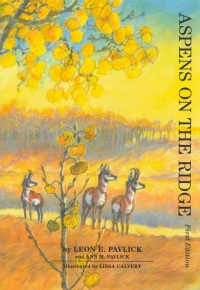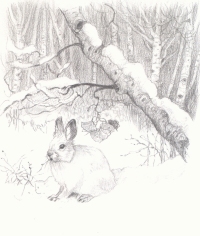| ________________
CM . . .
. Volume XX Number 26. . . .March 7, 2014
excerpt:
Aspens on the Ridge completes the “Ridge” trilogy that began with Red Pines on the Ridge and was followed by Foxes on the Ridge. Both of the previous titles mentioned the aspen trees or grove which also grew on a ridge that is located in southeastern Manitoba, and now the Pavlicks focus on this deciduous tree, aka the white poplar, which is the most widely distributed tree in North America. As occurred in Red Pines on the Ridge, this title includes an historical component in which the grove looks at how the land has changed, especially with the coming of the Europeans who decimated the buffalo herds and whose voracious demand for land for agriculture saw the forests’ trees being cleared. The aspen can recall:
However, in a sense, the aspen grove had the last laugh as aspens principally reproduce by suckering, not by seeds. Consequently, the aspen trees that remained standing around the now plowed lands sent out root suckers into the fields, and “Aspen saplings arose, each year more and more and further out....Aspen saplings, connected to established aspens, always had a good supply of food to nourish them, so a field cut into the forest slipped back to forest. Trembling aspen trees led the way, growing tall, straight.”
Recommended. Dave Jenkinson, CM’s editor, lives in Winnipeg, MB, where he has had to deal with the suckering habits of his sole aspen that so wanted to become a grove.
To comment
on this title or this review, send mail to cm@umanitoba.ca.
Copyright © the Manitoba Library Association. Reproduction for personal
use is permitted only if this copyright notice is maintained. Any
other reproduction is prohibited without permission.
NEXT REVIEW |
TABLE OF CONTENTS FOR THIS ISSUE
- March 7, 2014.
AUTHORS |
TITLES |
MEDIA REVIEWS |
PROFILES |
BACK ISSUES |
SEARCH |
CMARCHIVE |
HOME |

 Like Red Pines on the Ridge, Aspens on the Ridge reveals the connections found amongst the flora and fauna that populate the ridge. And, as was the case with the earlier two books, the black and white and full-colour illustrations of wildlife artist Lissa Calvert appear on most pages of Aspens on the Ridge.
Like Red Pines on the Ridge, Aspens on the Ridge reveals the connections found amongst the flora and fauna that populate the ridge. And, as was the case with the earlier two books, the black and white and full-colour illustrations of wildlife artist Lissa Calvert appear on most pages of Aspens on the Ridge.